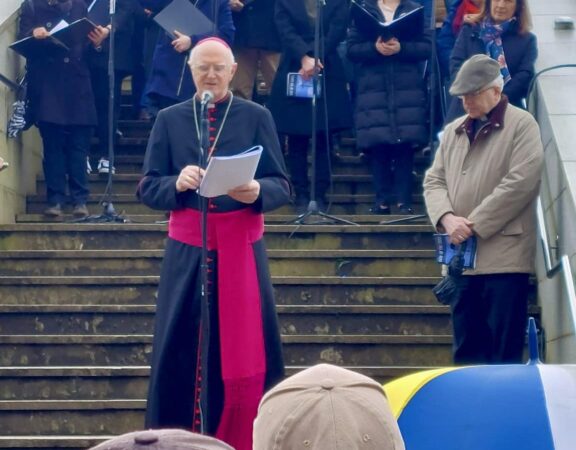Archbishop of Dublin and Primate of all Ireland
during the celebration of the Day for Consecrated Life,
—————
Church of the Holy Child, Larkhill, 2nd Feb ’07
- we have come to praise God and to thank him for the great gift of consecrated life which enriches the Church by a multiplicity of charisms;
- we have come to provide an opportunity for consecrated people to celebrate the marvels which the Lord has accomplished in them;
- we have come to foster a knowledge of and esteem for the consecrated life by the whole people of God.
I am particularly happy to have the occasion to celebrate the many ways in which your radical life-long commitment has enriched the Church in the Dublin diocese and to express my thanks and appreciation.
Religious men and women are to be found in every area of spiritual and social need in the Archdiocese: in prayer ministry, as chaplains in schools, colleges, universities, hospitals and prisons. They are present in education at all levels, health care, social services, with travellers, refugees, migrants, asylum seekers, those with HIV/AIDS, the elderly, the poor and marginalised and the homeless – to mention just a selection of ministries. Retired teachers do great work in helping our new-comer children and their parents to improve their language skills.
The Church today needs above all the witness of praying communities. I know that the sick and retired members of religious communities support us all by their prayers and suffering. In a very special way, the 10 contemplative communities (Carmelites, Poor Clares, Redemptoristines and Cistercians) support the Archdiocese through their on-going prayer for the needs of the Church. It strikes me that while popularly your houses are called enclosed, they in fact provide an open door for the many who wish to share in your prayer life and receive spiritual help and guidance. The simplicity of your poverty is for many a true antidote to the consumer and at times wasteful lifestyle which attracts many but which in the end leaves their hearts empty.
Following Christ means living in a specific cultural reality but by opening our hearts daily to the love of God rising above and cleansing that culture. It means pondering the word of God to help ourselves and others discern about the meaning of our lives. The opposite to a life of continual discernment is one which is self-centred and self satisfied, marked by smugness, arrogance, and overconfidence unable to recognise where we have got it wrong, open neither to listening to the other nor to the purifying power of the love and the mercy of Jesus. The Christian path is always one of conversion, turning around, changing our way of looking at and understanding things.
Sometimes people feel that things are going wrong with the Church and going wrong terminally! Numbers have gone done. Devotions which were popular are either not attended or gone. Young people do not seem to be attracted to the message of Jesus. The answer some propose is to go back to the way things were done in the past.
The challenge of faith is to address the realities of faith in the context of today and not think of some imagined better times of the past. Indeed, when we look back at those past times they were perhaps not as golden as they seem to appear. Perhaps today’s crisis is due at least in part to the fact that we had placed too much trust in externals of religions or on external supports to our own security, just as others have been entrapped in the externals of possessions.
Faith is about risk. It is about placing our trust in a God who protects us, but does not remove us from the trails and the realities of everyday life. What is the path that we must follow? How do we prepare for that path? The Gospels remind us that what we have to add to our clothes is not the designer label but sincere compassion, kindness, humility, gentleness, patience and love. These are not necessarily the clothes of the powerful or the influential or the fashionable. But they are the clothes of the good; it is the clothing of love alone which holds together the fabric of our own lives and the values of society.
If we free ourselves to live our religious life and the evangelical counsels with greater authenticity then we free ourselves to living the risks of religious life today. I was very struck to note that Catherine McAuley began her novitiate at the age of fifty two. Life expectancy in the Dublin of those days was not much above sixty. Catherine was therefore by the standards of the time quite elderly. But for Catherine it was never too late to change. And it is never too late for us to change. It is never too late to fight our sinfulness and human inadequacies. Times are challenging. But we – no matter whether we are young or old – are called to live in these times and these times only. Let us live our mission to the full, and like those missionaries I mentioned meet death faithfully where the Lord has called us to be.









